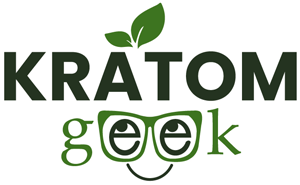Substance abuse and mental health issues are two national complications the United States has to solve. Our health-care system is in shambles. It has been for a long time. For the past three decades, politicians face mounting pressure to curb ballooning medical expenses. And that places a significant amount of the population in a bracket that can’t afford insurance. Plus, another section that does have private insurance doesn’t have additional funds to pay the out-of-pocket costs. As such, a chunk of the populace neglects any medical assistance. Some choose, instead, to circumvent the system. Others, that lack financial stability, it’s a decision made for them.
Out of those individuals, most are forced to medicate themselves whenever the time comes. And without medical supervision to dictate which medical ailments necessitate using narcotics or the dosage needed, those people risk addiction. At that moment, an individual’s life can quickly spiral out of control. Then that places the person in the crosshairs of police agencies. The drug laws breed felons in our society. So addicts and drug users are incentivized to use deception and underhanded tactics to stay out of the legal system.
Sometimes that means snitching on other addicts. But, if one can avoid it, addicts are more prone to lie in the presence of police officers. Most will say they haven’t been using—even when it’s evident they have. And a few place the blame on over-the-counter drugs or alcohol (if they’re not driving). But here lately, some even pinpoint kratom.
A Woman’s Police Report Doesn’t Check Out
On August 15th, 2020, Trisha Ann Gregorchik, from Altoona, Pennsylvania, called the police to report her car stolen. When the cops arrived, she claimed she’d parked in the parking lot and started walking into the convenience store with her five-year-old child. As she turned around to look back, she saw her Mitsubishi Lancer heading down the road with a thief behind the wheel. The reason she turned around, according to her, was because she left her wallet, keys, phone, and purse in the car.
However, none of the stories she told the police are correct. The cops used an iPhone “find my phone” app to locate her phone. And the ping came back close to her home. After investigating, the cops found her vehicle located in her neighborhood. But the hood and the brakes of the car were completely cold. So the automobile hadn’t been driven in a few hours. The police checked with her boyfriend. He had been asleep at their home. And he found Trisha’s purse, keys, and cellphone for the cops in their house.
The neighbors told the cops they saw Trisha take off on foot with her kid. She had headed down the road until they were out of sight. When the police questioned the lady about their discovery, she appeared confused and continued to repeat her initial story. When pressured, she was unable to recall any information from the moment she walked outside of her residence until calling the police to report the car stolen.
She Was Intoxicated on an Illicit Substance: Not Kratom
According to the police, Trisha seemed to act dazed and confused. It was almost as if she was under the influence of some drug or alcohol. And when the cops informed her they found the vehicle parked near her residence and recovered the lost items from inside her home, Trisha acted dumbfounded. She continued to repeat her previous tale of driving the car to the convenience store. Then she rehashed the fabrication she said earlier of witnessing someone driving off with it while walking into the building.
After Trisha was interrogated further by the officers, her story changed. She informed the cops she couldn’t remember what happened that night. When the cops queried about the lack of memory, Trisha confessed to taking a bunch of pills, so a blackout might have been possible before walking the eight blocks to the store. The lady admitted to the officers that she had started taking one-half gram dose capsules of kratom that day. Within a few hours, she had taken 30 kratom capsules while also taking Tylenol PM.
(That amount of kratom is only 15 grams. It wouldn’t have caused a blackout.)
A couple of weeks later, on September 2nd, 2020, the police moved forward with charges against Trisha Gregorchik. The state charged her with falsifying a police report. The cops also charged her with endangering the welfare of a child. And that was because the walk would have been on dimly or unlit streets with heavy traffic during the hours in question.
Altoona Mirror Wrote Two Articles Attacking Kratom this Year
Trisha Gregorchik was probably on an illicit drug at the time and decided to use kratom as a scapegoat. The charges were filed with the police station more than two weeks later. So no toxicology report was performed to determine what drugs were present. That means it might be possible kratom was never taken at all. However, the official statement lists kratom and Tylenol PM as the culprit.
Now, Tylenol PM also has Benadryl in the pill. And since the lady was confused, that could very well be a symptom of a diphenhydramine overdose, depending on how many of those pills she took: the case never specified.
Not only does the woman blame kratom for her troubles, but the news story describes kratom as “a synthetic drug that is used to prevent withdrawal from opiates,” but that description is incorrect. Kratom is not synthetic: it’s a leaf that grows on a tree.
It’s not the first time this year that the Altoona Mirror has written a hit piece on kratom. Back in May 2020, the paper ran another story where the state police indicated that Travis J. Charney, a thirty-one-year-old man, had died from a drug overdose that resulted from him taking too much heroin, fentanyl, and kratom. The man died from an overdose of fentanyl-laced heroin. The police even found two heroin stamp bags, labeled “Transformers” in red ink, inside the dead man’s car. Yet, they felt it was necessary to put a legal supplement beside two dangerous drugs.
A Health Supplement with Bad Publicity
The kratom community is fighting against misinformation on all fronts. The federal government, news outlets, addiction nonprofits, and even drug users work to make kratom inaccessible to the people who need it the most.
You have federal agencies that look to ban the plant, so the pharmaceutical industry can keep pushing its opioids. The Drug Enforcement Agency (DEA) and the Food and Drug Administration (FDA) are in cahoots to make kratom a scheduled drug.
The media loves to sensationalize a story. The Lawton Constitution recently did the same with a story written about a fentanyl dealer. The publication had to make sure it mentioned kratom was located in the house when the cops and DEA raided him. Since the cops didn’t find any fentanyl during the bust, they even listed kratom on the affidavit, alongside a long-dirty-laundry list of illegal items.
Nonprofits that are dependent upon an addicted populace have voiced outrage over kratom, too. A non-profit organization in Asheville, NC, recently went on a tirade about weening addicts off of heroin using kratom care packages. Mind you, that particular nonprofit stayed operational by providing drug addicts fresh needles. So it benefits the organization for addicts to continue using drug syringes.
And there are addicts that use kratom as an inanimate patsy when dealing with the police. This current story is a prime example. They don’t care if kratom remains legal. Addicts use illegal drugs.
So with wars on all sides, kratom advocates have their work cut out for them.






